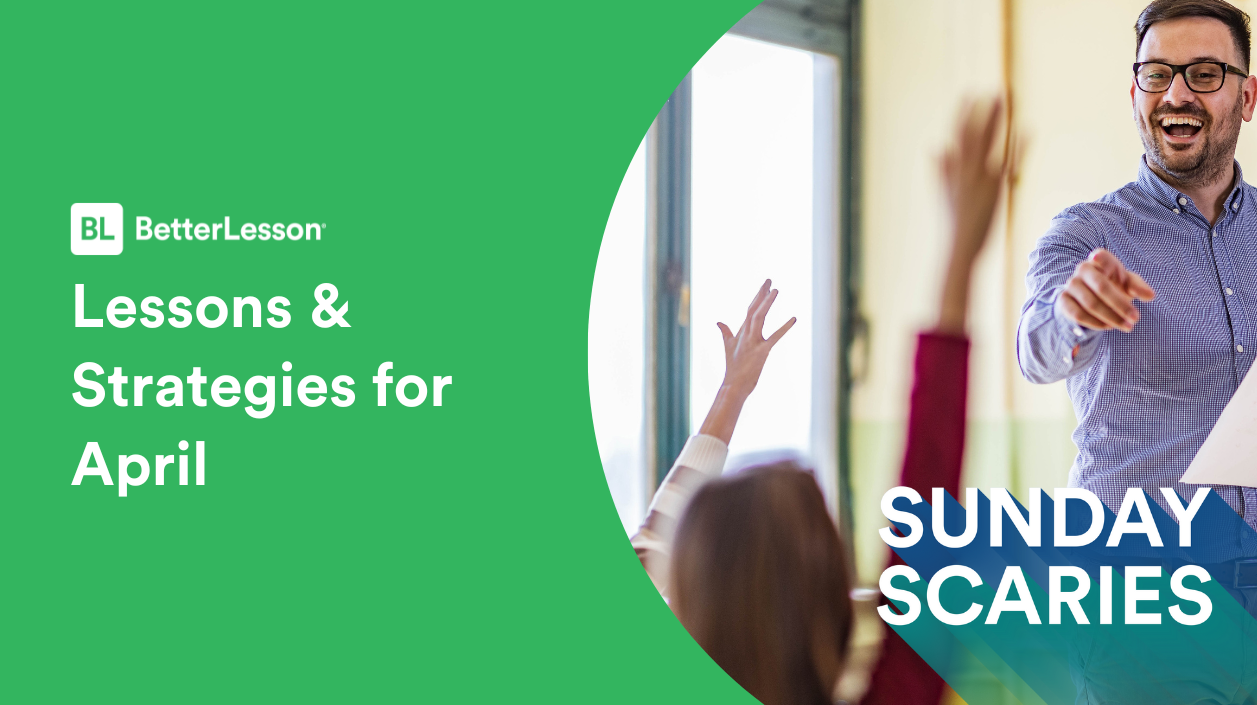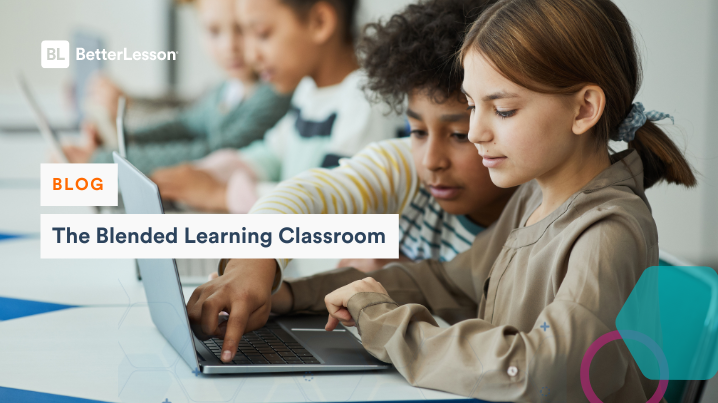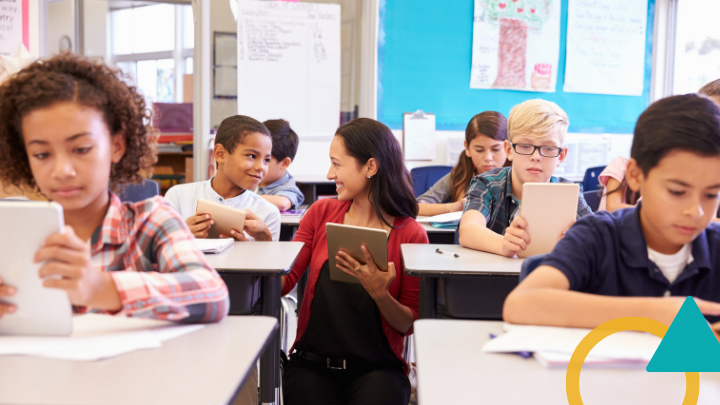It’s April and springtime is well underway. This month is filled with significant celebrations and observances: National Wildlife Week, Earth Day, and National Poetry Month. Each of these observations offer unique academic opportunities to explore environmental and cultural themes and concepts.
We’ve created a list of innovative and educational lesson plans created by BetterLesson Master Teachers that will captivate students at every grade-level throughout this month’s observances. We also know that student engagement can be a challenge as we enter springtime, with warming temperatures reminding us that summer is just around the corner. To support teachers with authentic student engagement, we’ve also compiled a set of Blended Learning instructional strategies designed to increase student engagement.
National Wildlife Week (April 5th – 9th)
Lesson Plan: Saving the Wildlife of the Water
Grade Level: Elementary
Big Idea: This inquiry-based lesson, students will test two different samples of soap and determine which one is best to clean oil from feathers.
Lesson Plan: Solving a Real-World Problem: Researching & Drawing a Diagram
Grade Level: Elementary
Big Idea: In this two-part lesson series, students research how to bring wildlife to a school yard and develop solutions.
Lesson Plan: Desert Dwellers
Grade Level: Middle
Big Idea: In this lesson, students recognize cause-effect patterns among fluctuations in wildlife populations.
Lesson Plan: What is a Field Journal?
Grade Level: Middle
Big Idea: In this five-part lesson series, students identify the components of scientific journal entries and apply descriptive writing to their entries.
Lesson Plan: Modeling Predator/Prey Populations
Grade Level: High School
Big Idea: In this lesson, students will be able to practice math modeling while applying a trig function to the population of rabbits and foxes.
Lesson Plan: Communities & Ecosystems
Grade Level: High School
Big Idea: In this four-part lesson series, students will understand the structure of ecosystems and how their members interact in complex ways in order to survive.
Earth Day (April 22nd)
Lesson Plan: History of Earth Day
Grade Level: Elementary
Big Idea: In this lesson, students learn the history of Earth Day and make a plan to reduce, reuse, or recycle.
Lesson Plan: Make a Mini Earth Model
Grade Level: Elementary
Big Idea: In this lesson, students make a delicious model of Earth with Oreos and paper.
Lesson Plan: How Can You Be An Earth Helper?
Grade Level: Elementary
Big Idea: In this lesson, students will learn how to take care of Earth through their actions and decisions.
Lesson Plan: Learning about Earth Day through Songs
Grade Level: Middle
Big Idea: In this lesson, students listen to songs and analyze the lyrics to compare the environmental themes.
Lesson Plan: Earth Rocks!
Grade Level: Middle
Big Idea: In this multimedia lesson, students describe the difference between rocks, soils and minerals.
Lesson Plan: History of Earth
Grade Level: Middle
Big Idea: In this seven-part lesson series, students will learn about and analyze important events in Earth’s History.
Lesson Plan: Environmental Bias
Grade Level: High School
Big Idea: In this lesson series, students will be able to 1) use maps to visually identify the proximity of human populations in different socio-economic classes to sources of pollution; 2) define environmental bias; 3) propose explanations for environmental bias.
Lesson Plan: What is Environmental Science
Grade Level: High School
Big Idea: In this lesson series, students will be able to explain the reasons that effective approaches to environmental problems require a broad base of interdisciplinary knowledge.
Lesson Plan: Analyzing “Silent Spring” & Researching Environmental Concerns
Grade Level: High School
Big Idea: In this lesson, students will critically analyze the illustrations, structure, tone, imagery, and impact of Silent Spring and investigate an environmental issue of their choosing in a style similar to Carson’s for an oral report.
National Poetry Month (all month)
Instructional Strategy: How to Build a School Poetry Night
Grade Level: All Grades
Big Idea: This instructional strategy lays out the process for creating a well-attended and inspirational showcase of student voices.
Lesson Plan: Apple Parts Using Poetry
Grade Level: Elementary
Big Idea: In this cross-disciplinary lesson, students use poetry to reinforce their ability to recall the parts of an apple.
Lesson Plan: Poetic Devices and Forms
Grade Level: Elementary
Big Idea: In this 15-part lesson series, students will explore a variety of poetic devices (rhythm and rhyme, figurative language) and forms (haiku, limerick, bio poems, and more).
Lesson Plan: We Are Going to be Published Authors!
Grade Level: Elementary
Big Idea: In this lesson series, students walk through the entire poetry writing process, culminating in the creation of hardbound books of student writing.
Lesson Plan: Reading, Writing, and Performing Poetry
Grade Level: Middle
Big Idea: In this 12-part lesson series,students analyze and write a variety of poetic forms, culminating in a student poetry performance.
Lesson Plan: Poetry Dictionary
Grade Level: Middle
Big Idea: In this lesson, students create a mnemonic device for remembering types of figurative language.
Lesson Plan: Using Poetry to Understand History
Grade Level: Middle
Big Idea: In this cross-disciplinary lesson, students will be able to analyze how authors use or alter history by comparing nonfiction accounts and a poetic portrayal of an historical event.
Lesson Plan: Reading & Writing Poetry
Grade Level: High School
Big Idea: In this five-part lesson series, students experiment with reading, writing, and discussing a variety of poetic forms.
Lesson Plan: Personification Poetry of Cell Organelles
Grade Level: High School
Big Idea: In this two-part cross-disciplinary lesson series, students describe the structure and function of cell organelles through the creation of their personification poem.
Lesson Plan: Transforming the Classroom into a Jazz Club: Analyzing “Jassonia” and Writing Musical Poetry
Grade Level: High School
Big Idea: In this lesson, students create a classroom Jazz Cafe that makes the Harlem Renaissance come to life by analyzing the poem “Jazzonia” and writing their own original musical poetry.
Blended Learning Strategies to Increase Student Engagement (all month)
Instructional Strategy: Strategic Design of Blended Learning
Big Idea: This strategy walks teachers through the steps of intentionally designing learning for a blended setting where digital and in-person elements come together to empower students to drive their own learning.
Instructional Strategy: Backchannel to Support Student Autonomy and Ownership
Big Idea: A backchannel is a conversation that takes place alongside an activity or an event. This strategy will help thinking thoughtfully about the creation and management of a backchannel process to support student autonomy and ownership, in particular during activities where students can progress at their own pace.
Instructional Strategy: Improving the Effectiveness of a Blended Learning Playlist or Pathway
Big Idea: This strategy provides resources for teachers to implement effective blended learning pathways that provide opportunities for goal-setting, reflection, feedback, and student choice.
Instructional Strategy: Digital Portfolios
Big Idea: This strategy walks through steps for students to create a digital portfolio, an ongoing document or file utilizes mediums like video recordings, audio files, hyperlinks, and so much more to demonstrate a student’s learning.
Instructional Strategy: Digital Storytelling: Stories, Songs, and Infographics to Share Knowledge
Big Idea: In this strategy, students can create and share digital stories by storyboarding and using a variety of digital tools to capture voice, images, and video.
Instructional Strategy: Game-Based Learning
Big Idea: In this strategy, teachers learn how to implement game-based learning, a teaching strategy where your students explore content and apply skills in a game setting. Using game-based learning in your classroom can increase engagement and can support your students to learn content in a fun and motivating way.








